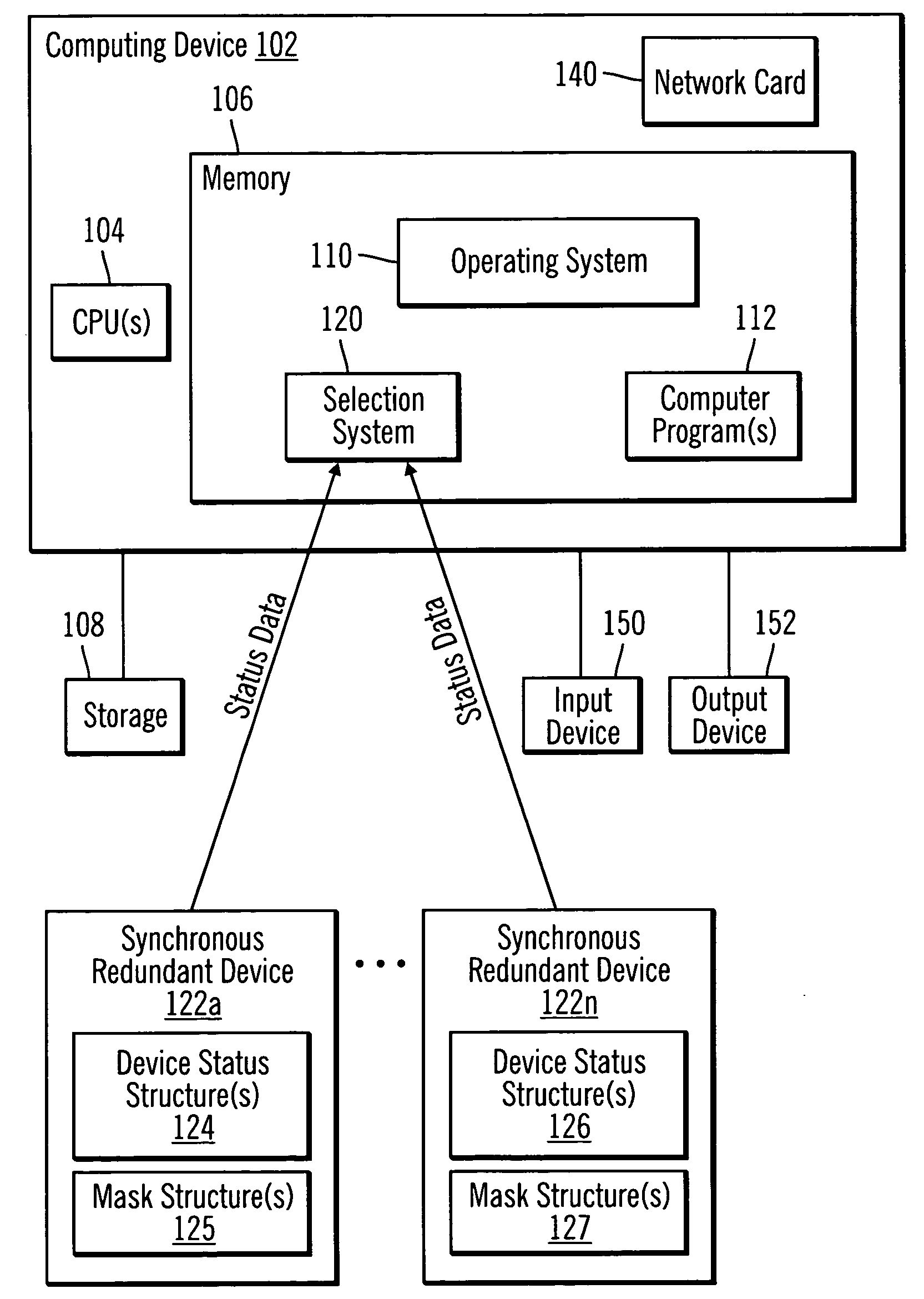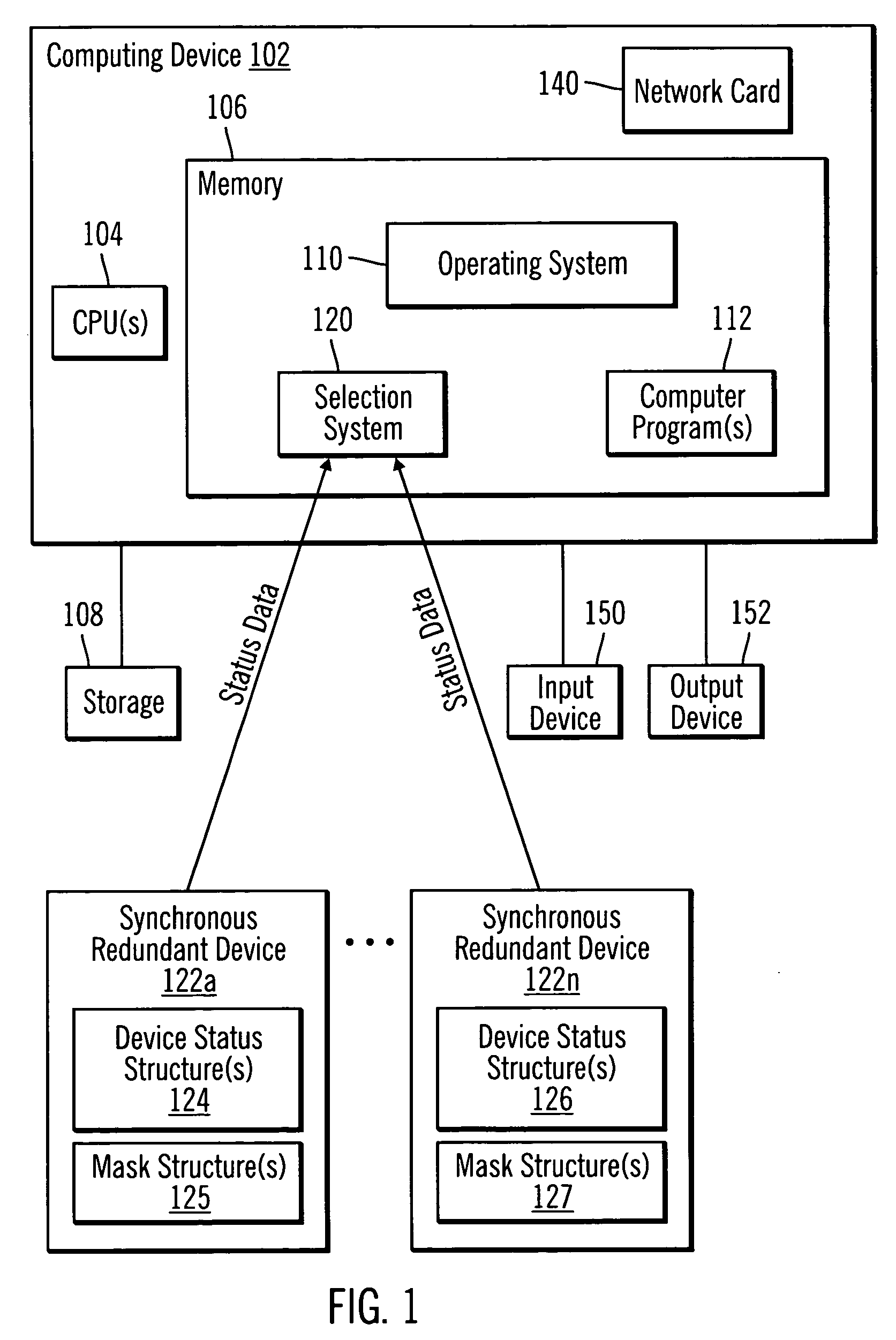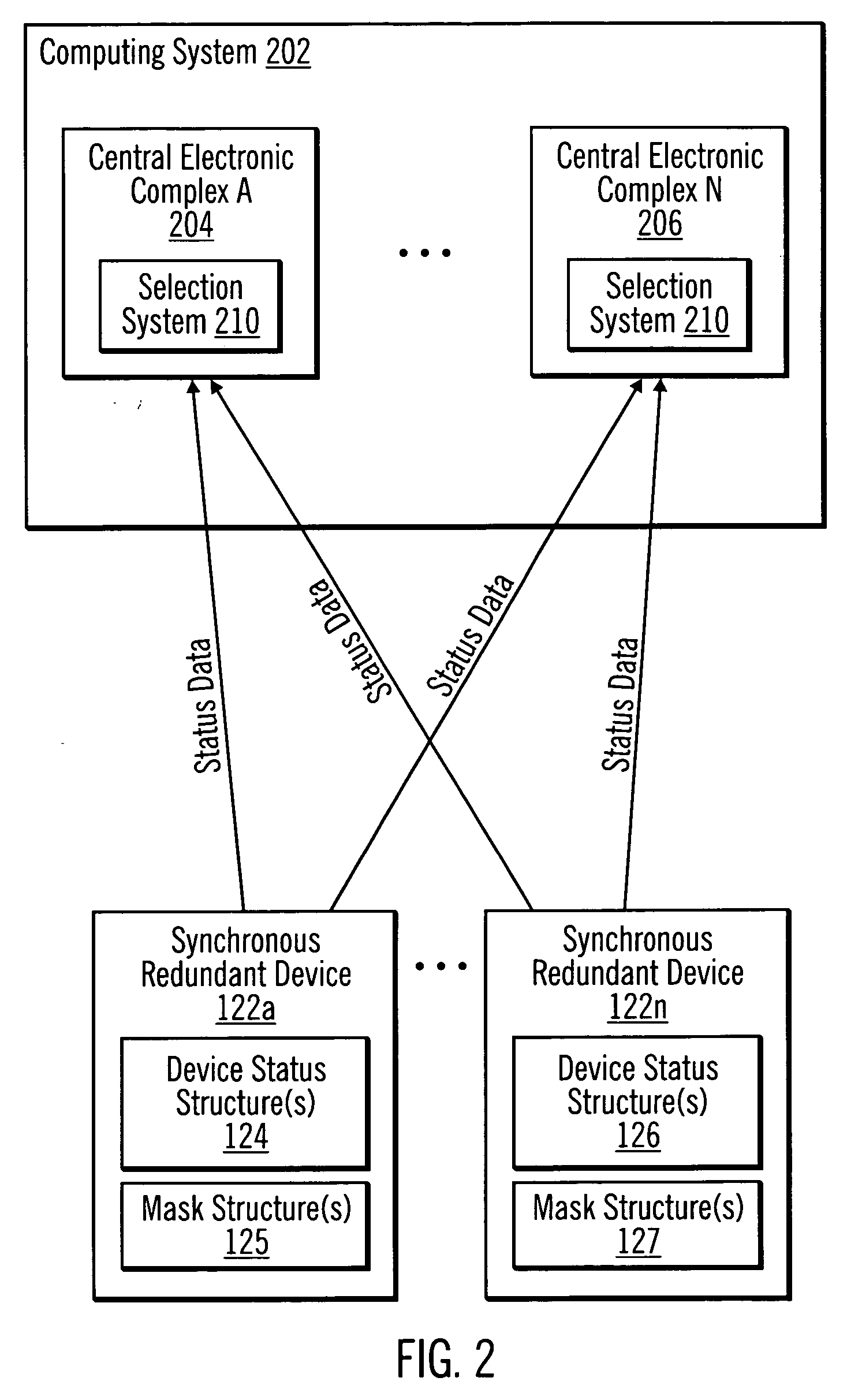Selection of status data from synchronous redundant devices
a technology of synchronous redundant devices and status data, applied in the direction of amplitude demodulation, instruments, coding, etc., can solve the problems of low accuracy, low reliability, and insufficient intelligence of the technique for a highly available system, and leave volatile data unprotected
- Summary
- Abstract
- Description
- Claims
- Application Information
AI Technical Summary
Benefits of technology
Problems solved by technology
Method used
Image
Examples
Embodiment Construction
[0021] In the following description, reference is made to the accompanying drawings which form a part hereof and which illustrate several implementations of the invention. It is understood that other implementations may be utilized and structural and operational changes may be made without departing from the scope of the invention.
[0022] Implementations of the invention use a combination of physical, logical, and virtual characteristics to select status data from one of multiple (e.g., two or more) synchronous redundant devices. The term “synchronous redundant devices” is used to describe devices that are multiple units of a same type of device (e.g., they are all power supply devices) and that are in synch with each other. In certain implementations, the synchronous redundant devices are reporting different (i.e., conflicting) status data. Physical characteristics may be described as ones that look at actual hardware indicators (e.g., bits in a register) in the status data. Logica...
PUM
 Login to View More
Login to View More Abstract
Description
Claims
Application Information
 Login to View More
Login to View More - R&D
- Intellectual Property
- Life Sciences
- Materials
- Tech Scout
- Unparalleled Data Quality
- Higher Quality Content
- 60% Fewer Hallucinations
Browse by: Latest US Patents, China's latest patents, Technical Efficacy Thesaurus, Application Domain, Technology Topic, Popular Technical Reports.
© 2025 PatSnap. All rights reserved.Legal|Privacy policy|Modern Slavery Act Transparency Statement|Sitemap|About US| Contact US: help@patsnap.com



